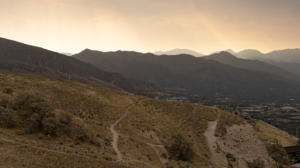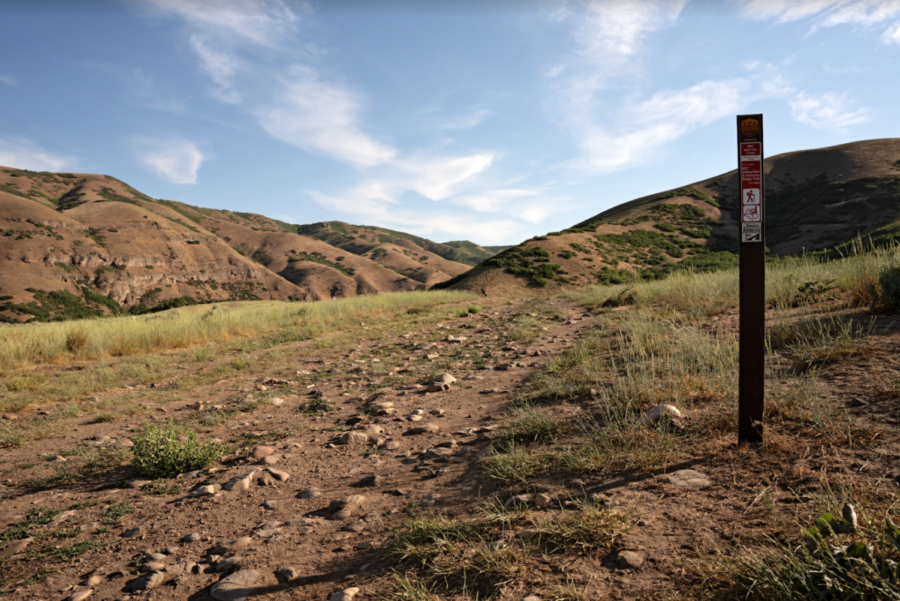Leave Less Trace
Most outdoor users don’t intentionally go into the backcountry with the intent to cause harm. Some people may not have had the mentorship and were never taught what best practices are. Others might do what they’ve learned in one place, even if it’s not appropriate somewhere else. For example, on the Grand Canyon and most desert rivers, urine and greywater are supposed to go in the river. On the Main Salmon in Idaho, the same liquids are supposed to be dispersed above the high water line.
Unfortunately, it is nearly impossible to experience the outdoors without causing some amount of harm to the places we love. Our presence, no matter how gentle, leaves an impact. Our clothing and equipment, our transportation, and sometimes even our breath can cause lasting impacts.
Most of the places I like to enjoy are not easily accessed exclusively by walking, so some form of motorized transportation is helpful. Last I checked, there’s no bus or train running regular routes to North Wash, a canyoneering hotspot near Hanksville, Utah. Most people will elect to travel by car.
Depending on the nature of the destination, a four-wheel-drive vehicle might be the optimal choice. Before I’ve even left the car, atrocities have been committed on my behalf. The materials for the car have been mined or otherwise extracted, shipped, manufactured, and shipped again. The roads I drove on, cut and blasted from the earth and then covered in tar, leave an obvious scar on the landscape. The fuel the car runs on had to be extracted, shipped, refined, and shipped some more.
To make matters worse, the majority of my gear is plastic. Even on a hike in cool weather, the synthetic fibers in my clothing, the laces in my shoes, my backpack, and my insulating layers, are made almost exclusively from petroleum. Even the lenses of my glasses are plastic.
If I’m going rafting in cold weather, I’m wearing a plastic suit on a plastic boat. And as much as I love GoreTex, with its breathability and its water resistance, the chemicals required for the Durable Water Resistant coating don’t stay on the clothing, don’t biodegrade, and probably aren’t the best for our ecosystems.
On a canyoneering or caving trip, I’m wearing a plastic helmet and rappelling on plastic ropes. These activities are known for being hard on gear. Ropes and clothing wear, leaving microplastics behind. Caving is a particularly difficult one for me because caves are normally very well protected from human meddling. And yet, meddle I do.
During the initial stages of a certain pandemic, Timpanogos Cave in American Fork Canyon was closed to visitors. When they reopened, tours had half the usual number of visitors. During this time, a physical science technician in the cave noticed one of the pools was starting to produce crystals again, and the pH had increased, closer to neutral. They determined that fewer visitors means less exhaled carbon dioxide, which forms carbonic acid when dissolved in water. Simply having people breathing in the cave was causing changes.
For the sake of convenience or safety, sometimes we alter the landscape further. Improved trails allow for easier access, with the obvious downside of the modification to the terrain. Bolts and hangers are installed, to allow for safer rappelling or better protection should a climber fall. In canyoneering, with poor technique using either natural or bolted anchors, pulling the rope after a rappel can leave incredible rope grooves.
To further complicate the issue, because access to these more remote places requires some specific and expensive gear, the ability to defile these places is generally reserved for the more wealthy. Ropes, webbing, carabiners, helmets, headlamps, drysuits, good boots, rafts, and so on are not cheap. The four-wheel-drive vehicle to haul all of this gear to the jumping-off point is even more expensive.
At some point, a decision was made. Or maybe it’s constantly being made. I have decided the pleasure I derive from being in these natural places justifies causing some harm to them. Other land users and land managers seem to agree. The questions are, how much damage is acceptable, and how do we minimize it?
Some places have a permit system in place to limit the number of visitors. Other places are protected by obscurity. If a canyoneering route requires just five miles of hiking to reach, many people won’t put in the effort. If the location of a cave is never published, very few people will cause harm, but very few will be able to enjoy it.
Trails and established routes help concentrate the destruction to a specific area. In the caving community, some caves have been deemed too fragile for recreational visitors. Only those who are involved in some sort of scientific pursuit enter. Similar to trails, some areas have been designated as sacrificial, some pristine, with most falling somewhere in the middle.
Another good reason to accept some damages is that when people experience the outdoors, it encourages them to care about conservation. Someone who has never been down a desert river may not appreciate how beautiful and fragile the riparian ecosystems are. Seeing firsthand the bleached corpse of a coral reef, dead from chemicals or rising water temperatures, impacts most people, and hopefully leads to more responsible choices. Especially when election season comes around.
So, the takeaway. What’s my point here?
I don’t think we should be discouraged from visiting all natural places. I think being conscious of the harm we might be causing is important, as well as taking steps to mitigate it as much as possible. Maybe it’s better if we don’t visit some places to limit human impact. Other places are already heavily impacted, so by treading lightly and picking up some trash, we may leave it better than we found it.
Perhaps it’s acceptable if we treat this like a “cheat day” with a diet or exercise routine. Being aware of an indiscretion, we can make an extra effort to be more eco conscious in other parts of our lives. By being involved with our political system, and encouraging others to do the same, we can hopefully shift policy and funding toward large scale changes. Ultimately, it’s a balancing act requiring us to be aware of the harm we are causing, deciding what damages are acceptable, and hopefully finding ways to offset those damages.



